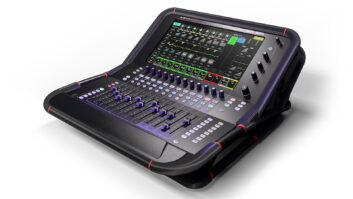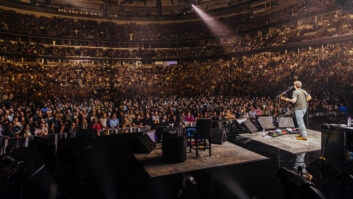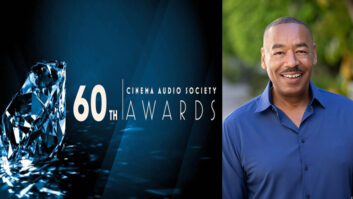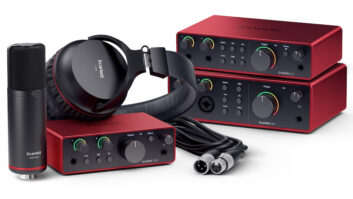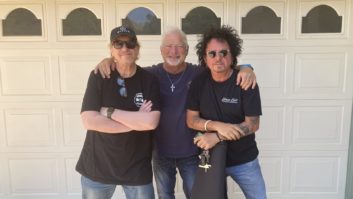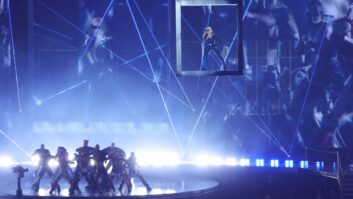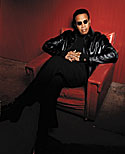
Though jazz and fusion superbassist Stanley Clarke has beenubiquitous on the music scene for decades now, playing a strong,supportive role with a wide variety of disparate artists, it has been adecade since he put out an album of his own music. The fact is, henever really had the opportunity to record one during that 10-yearperiod, such were the demands on his time. For a working musician,that’s a good thing.
In the ’70s, as a co-founder (with keyboardist Chick Corea) of thehighly influential group Return to Forever, Clarke influenced ageneration of both rock and jazz bassists, and won the admiration ofpeople all over the world with his inspired and, at times, flamboyantfret work. Whether playing electric or acoustic bass, Clarke wasregarded as a true pioneer; indeed, some of his harmonic innovations onelectric bass predated those of Jaco Pastorius, who emerged as theiconic god of electric jazz bass through his work with Weather Report,several years after Clarke’s tenure with RTF. As fusion waned in theearly ’80s, the Philadelphia-born bassist started venturing into moreaccessible and commercial aspects of contemporary jazz. Funk andR&B were emphasized with keyboardist George Duke for theClarke/Duke Project. Other collaborations included stints with a hostof top jazz and rock players, such as Corea, drummer Lenny White (alsoa member of Return to Forever), violinist Jean-Luc Ponty, RollingStones’ guitarist Keith Richards (their group toured extensively andintroduced Clarke to a whole new rock audience), Police drummer StuartCopeland and vocalists Chaka Khan and Nancy Wilson.
Another aspect of his career — album production — beganwith his first solo project, the 1973 Children of Forever. By1977, he had branched out and produced R&B/jazz vocalist Dee DeeBridgewater’s Just Family, pop vocalists Natalie Cole, HowardHewett and Brenda Russell, R&B/jazz vibraphonist Roy Ayers andothers. By the early ’90s, Clarke spread his wings even more, movinginto the demanding (but lucrative) world of writing and/or arrangingmusic for films and television; to date, he’s worked on some 50 films,including such notable soundtracks as What’s Love Got to Do With It(The Tina Turner Story), Boyz In the Hood, PoeticJustice, Higher Learning and last fall’s sleeper hit,Undercover Brother. It’s kept him extremely busy, to say theleast, and has put his promising solo career on the back burner for awhile.
“After my last solo album in ’93, I got heavily into thefilm-composing thing,” he explains from a hotel in Oakland,Calif. before a gig at Yoshi’s, the San Francisco Bay Area’s mostprominent jazz club. “I didn’t really have much to say [from asolo perspective]. I was going through a divorce at that point, and tobe quite honest, I really wasn’t in the mood for making a CD then. I’vebeen involved with some big soundtracks, but it’s very different frombeing a solo artist, and the movie has to take precedence overeverything else. I think I’ve done more recording in the past 10 yearsthan most people, but it’s all been directed toward film composing andsoundtracks. Just the same, it’s been great.”
But attitudes and outlooks change over time; these days, the bassistis happy to return to his solo career for a spell, making a fine newalbum called 1,2, to the Bass and touring to support it.“Usually, when I do a soundtrack, the music from the moviedoesn’t have anything to do with me personally,” he comments.“It’s music to enhance to the film. My own [solo] stuff is moreintrospective and about what’s on going in my head.”
Another significant distinction between film-music work andconventional music recordings is the time constraint. In cinema, musicis usually composed late in the process, with tremendous pressureplaced on it being written and recorded very quickly. By contrast,Clarke says 1,2, to the Bass was created in a“laid-back” time frame: Overall, it took about ayear-and-a-half, from conception to finished product, definitely aluxury never afforded a film soundtrack. Dan Humann, who has helpedClarke with technical matters for two decades, notes, “We justdidn’t have to rush through stuff, and also there was a lot of editingon this record as far as assembling pieces of music to createsongs.”
Humann set up and now operates the bassist/producer/composer’s homestudio, located in the Topanga Canyon area of Malibu, and is alsoClarke’s FOH engineer on the road. Serving in multiple capacities hasmade Humann indispensable to Clarke’s endeavors, and over the years,they’ve matured into a solid working team. “He’s the bulk of mywork,” states the engineer, who’s originally from Idaho.“We’re old friends, and I just ended up taking care of all of his[recording and touring], and it’s less people for him to deal with. Heloves it when we do a concert and blow up speakers in the house. That’sone of his favorite moments,” he says with a laugh.
At the studio in Malibu, Humann designed a room based around aFairlight MFX3.48 digital audio workstation system, a Mackie D8Bconsole, JBL 28 V Series speakers and various plug-ins and outboardpieces. He considers the setup fairly basic; nevertheless, he’s veryhappy with the Fairlight DAW: “It’s an amazing system that’s veryreliable. And I don’t have to worry about losing data or clipsdisappearing. We’ve had it for three years now, and during that time,we’ve only had four hours of downtime, and half of that was justwaiting for the Fairlight techs to show up.”
Material on Clarke’s 1,2, to the Bass runs a gamut of genresand moods. As you might expect, there’s some contemporary jazz, butthere’s also a symphonic composition, a fusion/R&B jam(“Hair”) with high-voltage guitarist Joe Satriani and hiphop-styled grooves. Clarke says that he’s especially proud of the titletrack, which is a collaboration with A Tribe Called Quest’s MC, Q-Tip(Jonathan Davis). “My son [Christopher, 23] says it’s a great dayfor hip hop,” Clarke beams, “’cause it’s different and wedid this thing on it that’s really unusual. If you saw Q-Tip and me onpaper, you’d wonder, ‘How the hell is that going to work?’He came with this rap that’s really positive, but not in a corny way.It’s uplifting and very poetic, with sophisticated music and a stonehip hop beat, plus me.”
“We had a lot of other people contribute to the CD,”Humann adds, “such as Oprah Winfrey reading Maya Angelou’s poetry[“I Will Not Be Moved,” produced originally by Quincy Joneseight years ago] and John Robinson, along with Vinnie Colaiuta sendingdrums tracks over on Digital Performer files. ‘JustCruising’ [originally written for Undercover Brother] hadGeorge Duke, Gerry Brown, Paul Jackson Jr. and others for a livesession. Also, he had other bass players, such as Jimmy Earl and ReggieWorkman come in, too. There were several string sections recorded onanalog 2-inch tape [cut at Ocean Way, Capitol and Sony in L.A.] andlater transferred to ADAT through an Apogee converter.” There isa pair of tracks featuring renowned Indian violinist L. Subramanianand, Clarke adds, “I also do a remake of an old Donny Hathawaytune, ‘Where Is the Love,’ [with] two young singers, GlennLewis and La Melle, on it. They’re kind of like Patti Austin and JamesIngram on an old Quincy Jones album. They are really killer singers andradio really loves them. I had an idea for that tune and always wantedto do it. It’s really nice with strings and a hip hop beatunderneath.”
All in all, the different sessions and formats equated to a lot oftransfers for the engineer and a fairly complicated mixing strategy.Ultimately, though, Humann mixed through the Mackie board, with theFairlight used as a playback deck and a 24-bit Alesis MasterLink as themixdown destination. This was a strictly D/D operation, and Humannaveraged about a song a day in a span of about two weeks during October2002. Clarke notes, “We stayed in the digital domain, but when wemastered, we took it to Bernie Grundman’s. There, it came out analogand kind of warmed it up. They have a real nice way of doing it overthere, and it really helps.”
Fans who just want to hear Clarke wail on the bass need not worry:He does plenty of that, too, on a wide range of basses. “On thisalbum, I played regular, tenor, piccolo and acoustic [bass],” hesays. “The acoustic piccolo bass sounds much like an acousticguitar. Also, I have a new bass from Alembic, because I had to retirean old bass [Series A]. [Alembic] came by and copied it and it’sactually better than the old one.” Humann adds, “He tendsto lean toward the Alembic basses. He tries other ones occasionally,but he’s really attached to the sound of them. On the record, they’rejust ripping and EQ’d to the max. But not on the low end; moreso on the high and midrange. Also, it’s a hard bass to record becauseit’s so alive, with hot dynamics and transients.”
Even though he made his mark on music many years ago, Clarke feelsthat he’s making some of his best music now. He’s a better composer andplayer today than he was when his public profile was larger. As hesays, “If I knew back then what I know about music now, I wouldhave really increased possibilities in that area[composing/arranging].” And now, through his film work and hisrevived solo career, there’s more of his music to go around than therehas been for quite some time.

